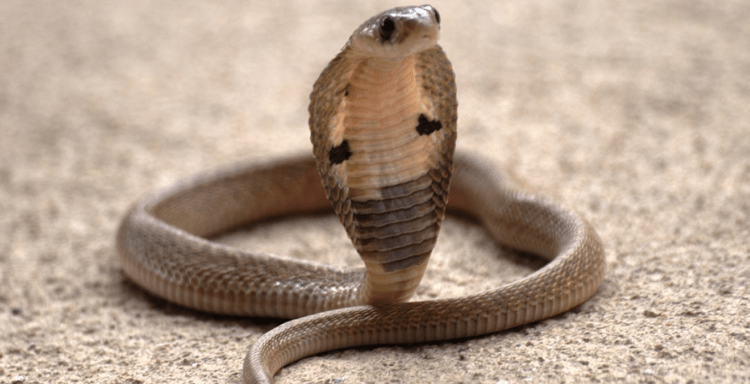It has long been known that cobra venom has a neurotoxic effect. That is, it acts on the nervous system and blocks muscle contractions. This leads to paralysis of the muscular system, including that responsible for breathing. Therefore, if a person is not provided with medical assistance in time, he may die from respiratory arrest. But even after antivenom is administered, a cobra bite often causes hemorrhage, which leads to complications and sometimes death. At the same time, previous studies showed that snake venom does not destroy vascular cells, so the cause of the hemorrhages remained a mystery. Therefore, existing antidotes are not always effective. Now scientists have managed to figure out how cobra venom acts on the circulatory system.

The venom of the Indian cobra not only causes respiratory arrest, but also destroys blood vessels. Photo source: wikipedia.org
Why the antidote against cobra venom is not always effective
Snake bites remain a serious public health problem to this day, especially in subtropical regions. According to WHO statistics, 1.8 to 2.7 million people suffer from snake bites every year. Of these, 81,000 to 138,000 cases are fatal. Snake bites also often lead to serious consequences – blindness, chronic organ diseases, etc. One of the causes of death and complications, as mentioned above, is hemorrhage.
In previous studies of the effects of venom on the circulatory system, scientists used two-dimensional models of endothelial cells, that is, cells that line the blood vessels. As it turned out, they are chemically resistant to the effects of venom, so, as mentioned above, the cause of hemorrhage remained a mystery.

The effect of the venom of many snakes is completely unknown to science. Photo source: natworld.info
Organoids and organ on a chip — what is it
In a recent study, scientists used a new technology called “organ on a chip.” Essentially, they used a human blood vessel organoid in conjunction with a special device (a chip). The organoid included endothelial cells and an extracellular matrix, also known as the physical structure that supports cells.
We have already reported that organoids are three-dimensional clusters of cells of one type or another, grown in laboratory conditions. Despite the fact that they are not a full-fledged human organ, they significantly expand the capabilities of scientists in terms of new research. For example, thanks to organoids, scientists can find out how certain organs of embryos develop, test antidotes and drugs on them, find out how viruses affect the body, etc.

A device for creating an organ on a chip. Photo source: nbcnews.com
«Organy on a chip», or rather the «chip» created specifically for growing various cell cultures. It consists of microcontainers and microchannels, which allows not only to grow various cell cultures, but also to simulate the functioning of individual organ systems, an entire organ, or even several organs simultaneously. Thus, the researchers were able to create their own tiny model of blood vessels.
Why cobra venom kills humans
As reported in a study published in the journal Scientific Reports, scientists exposed model blood vessels to the venom of four species of snakes: the Indian cobra, the West African carpet viper, the multi-banded krait and the Mozambican spitting cobra. All of them belong to the most poisonous families of snakes – vipers and elapids.
The scientists also used special visualization methods that allowed them to observe the processes occurring inside the chip in real time. As it turned out, there are two different mechanisms by which poisons affect a blood vessel. In one case, they cause endothelial cells to detach from its matrix, that is, they actually “knock out” the cells, which causes the vessels to collapse. In the second case, they lead to the destruction of the endothelial cell membrane.

3D reconstruction of a blood vessel on a chip. Photo source: livescience.com
As you might guess, two-dimensional cell models could show the destruction of cell membranes by some poisons, but they could not show mechanical damage associated with cell detachment. Now the researchers are going to test their blood vessel model on more poisons to create effective antidotes.
Be sure to subscribe to our Zen and Telegram channels so you don't miss the most interesting and incredible scientific discoveries!
Finally, let us remind you that the Indian cobra — Far from being the most poisonous snake. For example, the black mamba, which we talked about earlier, is more poisonous. Its poison kills in 100% of cases.